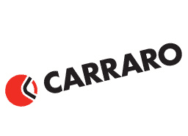In the world of heavy machinery and commercial vehicles, efficiency and versatility are key. One technology that exemplifies these qualities is the Power Take-Off (PTO) system. At K&L Clutch, we’re passionate about power transmission, and we believe understanding PTO can help our customers make informed decisions about their equipment needs. In this article, we’ll explore how PTO works and why it’s such a crucial component in many industries.
What is Power Take-Off?
Power Take-Off, commonly abbreviated as PTO, is a mechanical system that allows the main engine of a vehicle or stationary power source to transmit power to additional equipment or machinery. It’s essentially a way to “take off” power from the primary engine and use it to operate other devices.
The Basic Principle of PTO
At its core, PTO works on a simple principle: it taps into the vehicle’s transmission or engine to divert some of the power being generated. This diverted power can then be used to run auxiliary equipment, such as hydraulic pumps, water pumps, generators, or specialized tools specific to various industries.
Components of a PTO System
A typical PTO system consists of several key components:
1. PTO Drive Gear: This gear is connected to the vehicle’s transmission or engine.
2. PTO Unit: The main body of the PTO, which houses the gears and bearings.
3. Output Shaft: This shaft transmits the power from the PTO unit to the auxiliary equipment.
4. Control Mechanism: Usually a lever or switch that engages or disengages the PTO.
How PTO Engages
When the PTO is engaged, here’s what typically happens:
1. The operator activates the PTO control.
2. The PTO clutch engages, connecting the PTO drive gear to the output shaft.
3. Power from the engine or transmission is transferred through the PTO unit.
4. The output shaft begins to rotate, providing power to the attached equipment.
Types of PTO Systems
There are several types of PTO systems, each suited to different applications:
1. Transmission-mounted PTO: This is the most common type, attached directly to the vehicle’s transmission.
2. Engine-mounted PTO: Connected directly to the engine’s crankshaft or timing gears.
3. Split-shaft PTO: Installed in the vehicle’s driveline, between the transmission and differential.
Applications of PTO
The versatility of PTO systems has made them indispensable in numerous industries:
– Agriculture: Powering implements like balers, sprayers, and seeders.
– Construction: Operating cement mixers, compressors, and hydraulic systems on excavators.
– Utilities: Running bucket lifts, augers, and winches on utility trucks.
– Transportation: Powering refrigeration units on reefer trucks or hydraulic systems on dump trucks.
– Emergency Services: Operating water pumps on fire engines or hydraulic rescue tools.
Benefits of PTO Systems
1. Efficiency: PTO eliminates the need for separate engines to power auxiliary equipment.
2. Cost-effectiveness: It reduces fuel consumption and maintenance costs associated with multiple engines.
3. Space-saving: PTO systems take up less space than additional engines or motors.
4. Versatility: A single vehicle can perform multiple functions with different PTO-driven attachments.
Considerations When Using PTO
While PTO systems offer numerous advantages, there are some important considerations:
1. Power Management: Engaging PTO reduces the power available for vehicle propulsion.
2. RPM Requirements: Many PTO systems require the engine to run at a specific RPM for optimal performance.
3. Safety: Proper training is crucial, as PTO systems can be dangerous if mishandled.
4. Maintenance: Regular inspections and maintenance are necessary to ensure smooth operation and longevity.
The Future of PTO Technology
As vehicle technology advances, so does PTO. We’re seeing trends towards:
– Electric PTOs: In line with the shift towards electric vehicles.
– Intelligent PTO Systems: With advanced controls and monitoring capabilities.
– Higher Efficiency: Continuous improvements in power transmission efficiency.
Power Take-Off systems have revolutionized how we utilize engine power across various industries. By understanding how PTO works, businesses can make informed decisions about their equipment needs and maximize efficiency. At K&L Clutch, we’re committed to providing top-quality PTO solutions and helping our customers harness the full potential of their machinery.
Whether you’re in agriculture, construction, transportation, or any industry that relies on powerful machinery, PTO systems offer a versatile and efficient way to multiply the capabilities of your vehicles and equipment. As technology continues to evolve, we can expect PTO systems to become even more integral to powering the work that drives our world forward.

























